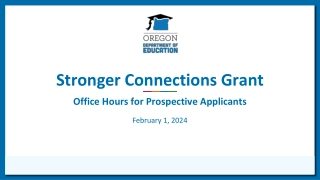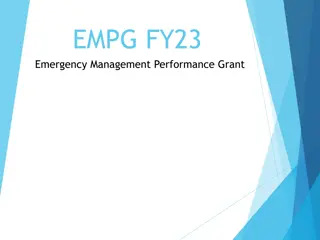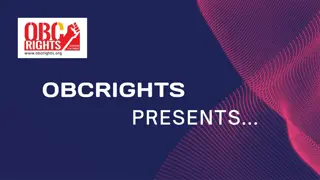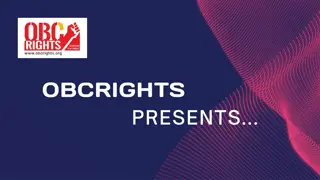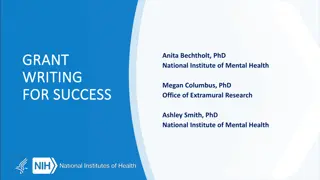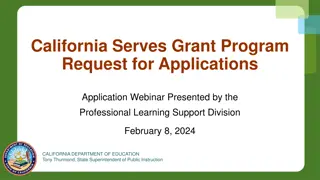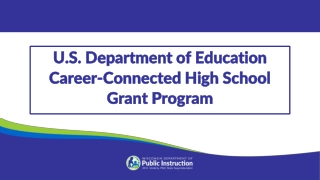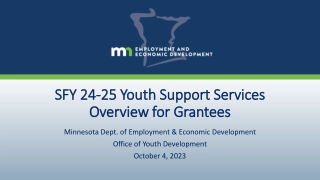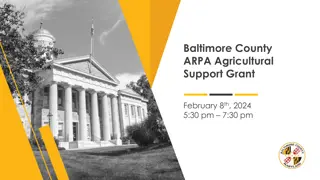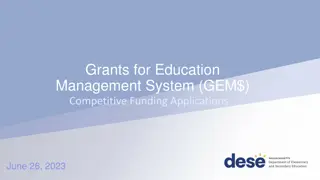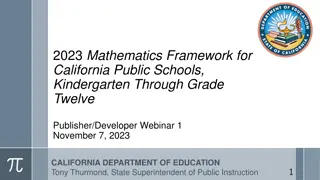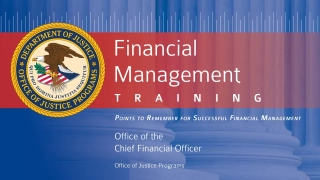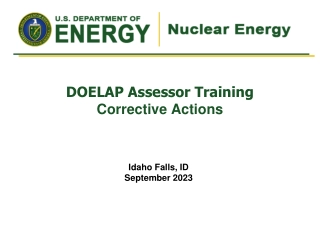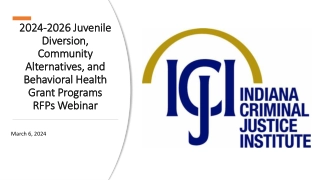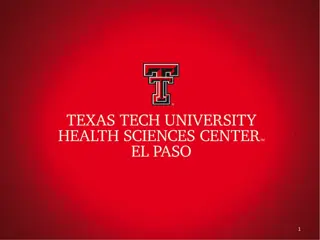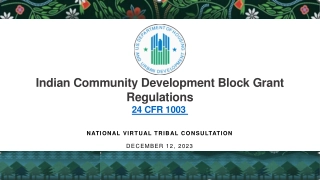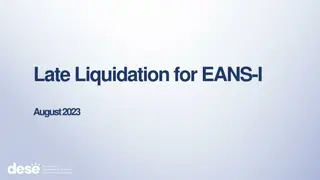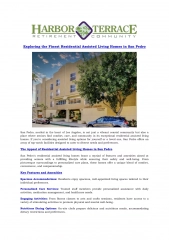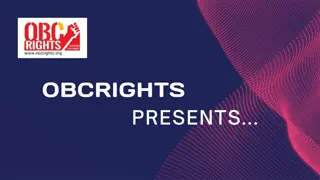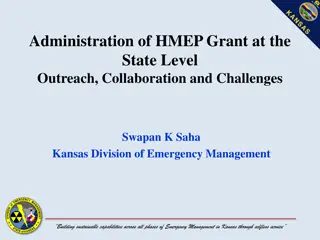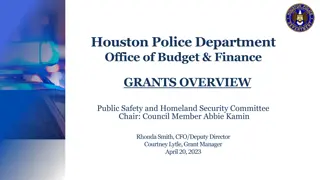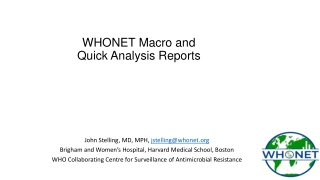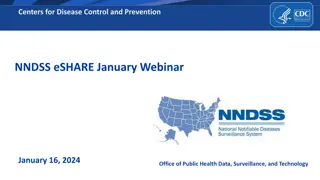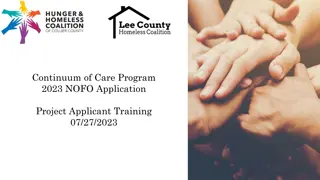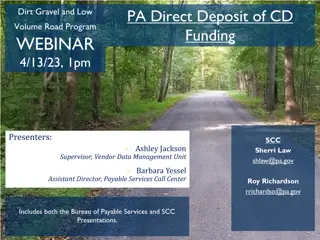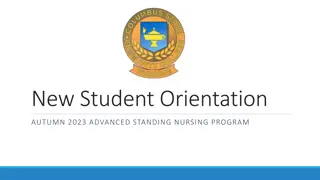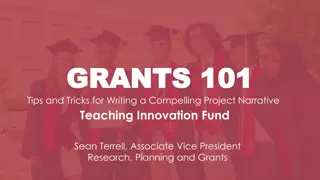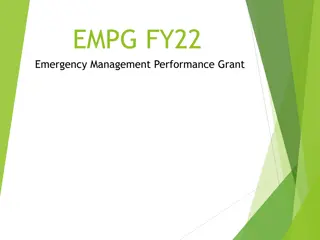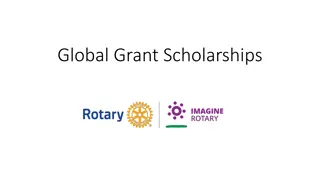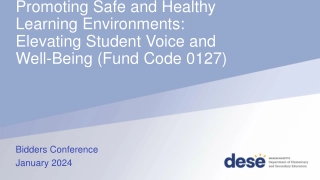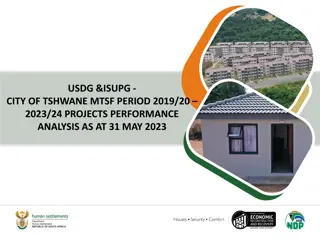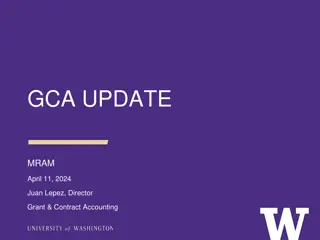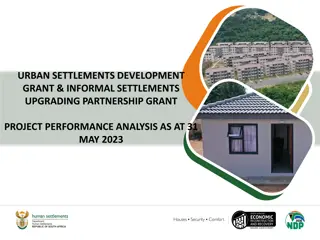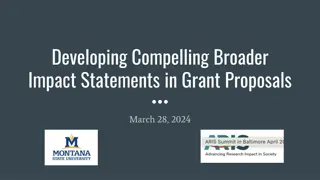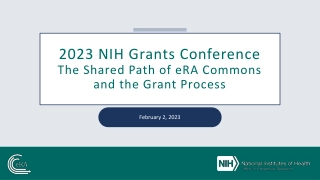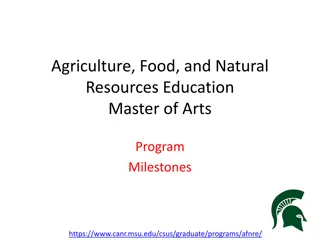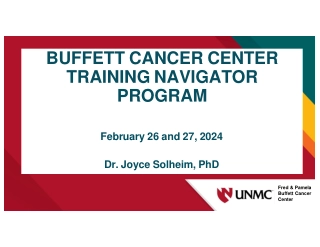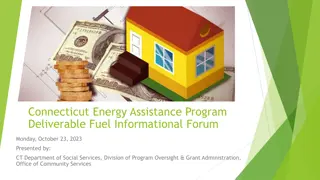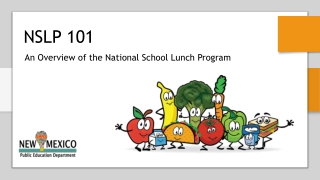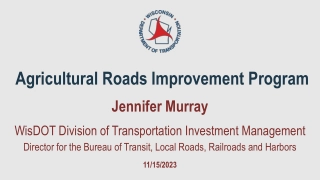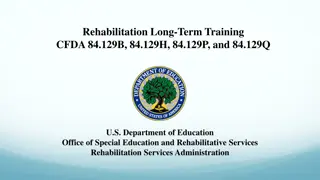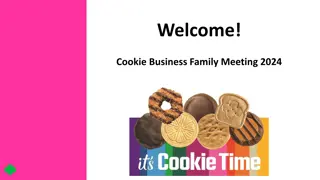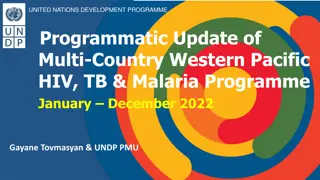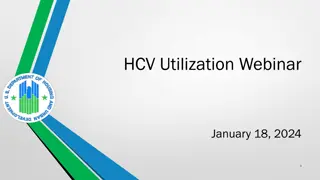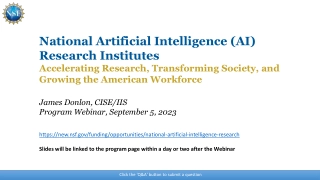Prospective Applicant Webinar and Grant Program Overview
Join the Prospective Applicant Webinar on Thursday, November 9, 2023, from 3-4 p.m. ET to learn about a grant program aimed at supporting mathematics faculty members at primarily undergraduate institutions without a PhD program. The program provides funding to bridge the funding gap between faculty at doctorate-granting departments and those at PUIs, enhancing research activities and visibility at PUIs. Explore eligibility requirements, application timelines, and grant details for the 2024-2025 cycle.
Prospective Applicant Webinar and Grant Program Overview
PowerPoint presentation about 'Prospective Applicant Webinar and Grant Program Overview'. This presentation describes the topic on Join the Prospective Applicant Webinar on Thursday, November 9, 2023, from 3-4 p.m. ET to learn about a grant program aimed at supporting mathematics faculty members at primarily undergraduate institutions without a PhD program. The program provides funding to bridge the funding gap between faculty at doctorate-granting departments and those at PUIs, enhancing research activities and visibility at PUIs. Explore eligibility requirements, application timelines, and grant details for the 2024-2025 cycle.. Download this presentation absolutely free.
Presentation Transcript
Prospective Applicant Webinar Thursday, November 9, 2023 3-4 p.m. ET
Target Population & Goals Target Population Faculty at Primarily Undergraduate Institutions (PUIs) in the US Institution that does not offer a PhD in mathematics Highest degree granted in mathematics is master s Roughly 14,000 full-time faculty at 1,100 such institutions Program Goals Help address disparity in funding opportunities for faculty in doctorate-granting departments vs. faculty at PUIs Help increase visibility of active research at PUIs Support the profession in general
Program Overview Established in 2023 with funding from the Simons Foundation Additional support from Eve, Kirsten, Lenore, and Ada of the Menger family and the AMS 40 46 grants anticipated for 2024 Provides $3,000 per year for three years to support research-related activities Individual awards to support enhancement of research agenda Annual discretionary funds for institutions that administer grants
Eligibility Requirements Employed as a full-time, tenured/tenure-track mathematics faculty member at a PUI (exceptions in cases where PUI does not offer tenure) Engaged in an active research program in an area supported by the NSF Division of Mathematical Sciences: Algebra and Number Theory Analysis Applied Mathematics Combinatorics Computational Mathematics Foundations Earned PhD prior to August 1, 2019 (for this cycle) No external funding exceeding $3,000 per year Not in residence at an NSF institute Geometric Analysis Mathematical Biology Probability Statistics Topology
2024-2025 Application Timeline Application opens Application closes Application review Decision notifications Grants begin January 9, 2024 March 18, 2024 Through June 2024 Late June 2024 July 1, 2024
Grant Year 1 Timeline Year 1 institution awards and Year 2 grantee funds issued Coordination of grantee payments with institutions Year 1 technical and expense reports requested Year 1 grantee funds issued to institutions Year 1 technical and expense reports due August 2024 July 2025 July 2024 May 2025 August 2025
Required Application Materials MathPrograms.org application questions Cover letter (up to 1 page) NSF-style biographical sketch (up to 3 pages) Summary of previous research (up to 1 page) Research proposal and bibliography (up to 3 pages) NSF-style current and pending research support statement (up to 1 page) Budget statement (up to 1 page) Institutional verification(s)
MathPrograms.org Application Questions Job title Primary area of research Institution and department affiliations (all) Institution details Description of significant planned time away Expected teaching load Expected collaborators
Cover Letter Explain expected impact of grant on your research and development as a mathematician Describe features of your institution and student population Discuss factors that affect your research productivity Address special circumstances not addressed elsewhere in application
NSF-Style Biographical Sketch Professional preparation Appointments Products closely related to proposed research (no more than 5) Other significant products (no more than 5) Synergistic scholarly and professional activities (no more than 5)
Biographical Sketch Webpage To create an NSF biographical sketch: Visit https://www.ncbi.nlm.nih.gov/sciencv/ Log in Follow the prompts in the walk-through form Select Create new document Download PDF
Summary of Previous Research Description of past research results Evidence of applicant s ability to carry out the proposed project
Writing a Strong Research Proposal Describe the goals/objectives of the proposed research Discuss the potential impact of the proposed research Note prospective collaborators Identify possible geographic locations where work will be conducted Suggestions: Ask a colleague outside your specialization to read your proposal Focus on research; context and background should be addressed elsewhere
NSF-Style Current and Pending Research Support Statement Describe all current research funding, be sure to include end dates Note all pending research support Use the walk-through statement form available at https://www.ncbi.nlm.nih.gov/sciencv/
Budget Statement Include anticipated allowable expenses and their relevance to your research Estimate costs for all 3 years of the grant Examples of allowable expenses: Conference participation Institute visits Collaboration travel (by awardee or collaborator) Computer equipment/software Family care Hiring a teaching/research assistant Publication expenses Stationery, supplies, and books Membership fees to professional organizations
Institutional Authorization/Verification Work with your institution s office of sponsored programs (or equivalent) to prepare application Provide representative s information in application so the AMS can confirm your cooperation with this office We expect no more than 2 grants will be awarded to faculty at the same institution within a given year
Selection Process Programs staff reviews applications technical eligibility and completeness At least two committee members review each application Committee recommends grantees Co-chairs and staff mathematician review recommendations, name grantees, and rank alternates Considerations Potential impact of funding for the grantee, the program, and the field Evidence of ability to use the grant to enhance existing research activity Distribution of awards across institution types, geographic regions
Common Weaknesses Failing to adhere to page limits and other requirements these will be strictly enforced Research problem was not sufficiently motivated Lack of evidence of a track record or preparation that supports the research plan Failing to answer questions in the application or being too vague This is a 3-year grant, be sure your research proposal includes a 3-year plan
Common Strengths Used the FULL page limit to develop, motivate, and explain proposed research Provided specific goals or projects while still writing for a general mathematics audience/reviewer When there was expected student involvement identified the contribution to the applicant s research plan Clearly explained the importance of the funding for the researcher
Thank you for joining us today! More questions? Email ams-simons-pui@ams.org Attending the 2024 Joint Mathematics Meetings? Staff will be available at the AMS Programs booth on Thursday, January 4, 3-5 p.m., and Friday, January 5, 9-11 a.m., to answer questions about the AMS-Simons PUI Faculty program.


